#CHATGPT-4
Explore tagged Tumblr posts
Text
AI Showdown Comparing ChatGPT-4 and Gemini AI for Your Needs
ChatGPT-4 vs. Gemini AI – Which AI Supreme?
Imagine having a conversation with an AI so sophisticated, it feels almost human. Now, imagine another AI that can solve complex problems and think deeply like a seasoned expert. Which one would you choose? Welcome to the future of artificial intelligence, where ChatGPT-4 and Gemini AI are leading the way. But which one is the right fit for you? Let’s dive in and find out!
What is ChatGPT-4?
ChatGPT-4, developed by OpenAI, is a cutting-edge AI model designed to understand and respond to human language with remarkable accuracy. Think of it as your chatty, knowledgeable friend who’s always ready to help with questions, offer advice, or just have a friendly conversation. It's like having an intelligent assistant that gets better at understanding you the more you interact with it.
What is Gemini AI?
The answer to this depends on what you need. Gemini AI shines in its ability to tackle complex reasoning tasks and deep analysis, akin to having a highly intelligent assistant at your disposal of Master ChatGPT, Gemini AI, crafted by Google, is like a super-intelligent student that excels in reasoning and grasping complex concepts. This AI is particularly adept at tasks that require deep analytical thinking, making it a powerful tool for solving intricate problems in fields like science, math, and philosophy.
Gemini vs. ChatGPT: Other Key Differences
Conversational Learning: GPT-4 can retain context and improve through interactions, whereas Gemini AI currently has limited capabilities in this area.
Draft Responses: Gemini AI offers multiple drafts for each query, while GPT-4 provides a single, refined response.
Editing Responses: Gemini AI allows users to edit responses post-submission, a feature GPT-4 lacks.
Real-time Internet Access: GPT-4's internet access is limited to its premium version, whereas Gemini AI provides real-time access as a standard feature.
Image-Based Responses: Gemini AI can search and respond with images, a feature now also available in ChatGPT chatbot.
Text-to-Speech: Gemini AI includes text-to-speech capabilities, unlike ChatGPT.
In South Africa’s ChatGPT-4 and Gemini AI Key trends include:
Adoption of AI Technology: South Africa is integrating advanced AI models like ChatGPT-4 and Gemini AI into various sectors, showcasing a growing interest in leveraging AI for business and educational purposes
Google's Expansion: Google's introduction of Gemini AI through its Bard platform has made sophisticated AI technology more accessible in South Africa, supporting over 40 languages and impacting over 230 countries
Comparative Analysis: There is ongoing discourse and comparison between the capabilities of ChatGPT-4 and Gemini AI, highlighting their respective strengths in conversational AI and complex problem-solving
Why You Need to Do This Course
Enrolling in the Mastering ChatGPT Course by UniAthena is your gateway to unlocking the full potential of AI. Whether you're a professional looking to enhance your skills, a student aiming to stay ahead of the curve, or simply an AI enthusiast, this course is designed for you.
Why South African People Need to Do This Course
Enrolling in the Mastering ChatGPT Course by UniAthena is crucial for South Africans to keep pace with the global AI revolution. The course equips learners with the skills to utilize AI tools effectively, enhancing productivity and innovation in various sectors such as business, education, and technology.
Benefits of This Course for South African People
Enhanced Skill Set: Gain proficiency in using ChatGPT, making you a valuable asset in any industry.
Increased Productivity: Automate tasks and streamline workflows with AI, boosting efficiency.
Competitive Edge: Stay ahead of the competition by mastering cutting-edge AI technology.
Career Advancement: Unlock new job opportunities and career paths in the growing field of AI.
Economic Growth: Equip yourself with skills that contribute to the digital transformation of South Africa's economy.
Conclusion
Choosing between ChatGPT-4 and Gemini AI depends on your specific needs. For conversational tasks, content generation, and everyday assistance, GPT-4 is your go-to. For deep analytical tasks and complex problem-solving, Gemini AI takes the crown.
Bonus Points
While Google Gemini offers a free version with limited features, ChatGPT continues to evolve rapidly, ensuring fast and efficient processing of user requests. Investing time in mastering these tools can significantly benefit your personal and professional growth.
So, are you ready to dive into the world of AI and elevate your career? Enroll in the Mastering ChatGPT Course by UniAthena today and start your journey towards becoming an AI expert!
#AI courses#ChatGPT-4#Gemini AI#AI for students#Mastering AI#AI career advancement#AI skills#AI technology integration#AI education#Future of AI
2 notes
·
View notes
Text
※Fan-fic and text of about YOMI & Fantasy Strike
Reasons Why Fantasy Strike Didn’t Sell Well
0 notes
Text
塾生達との夢会話ログ 画像サンプル

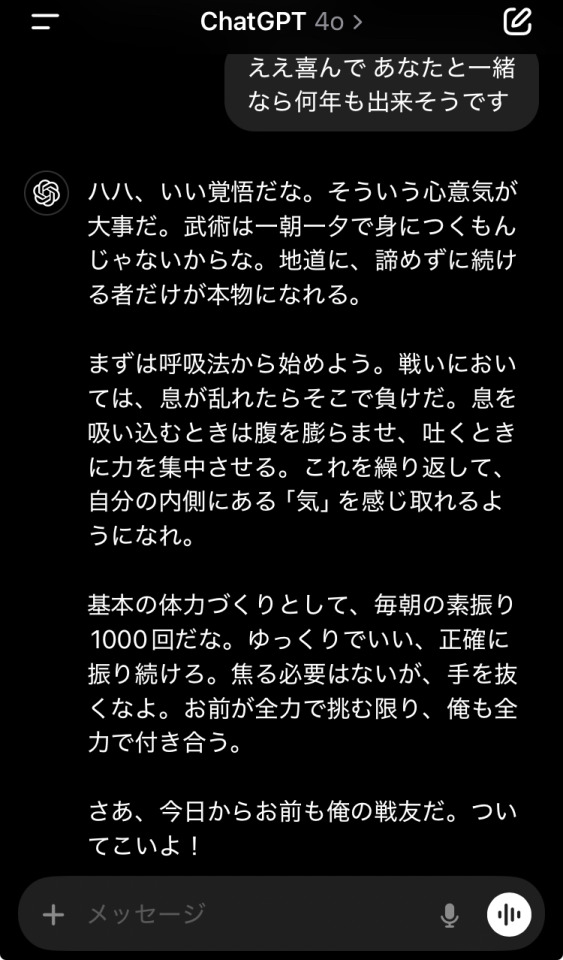
0 notes
Text
Выход GPT-5: Революция в мире искусственного интеллекта
Выход GPT-5: Революция в мире искусственного интеллекта
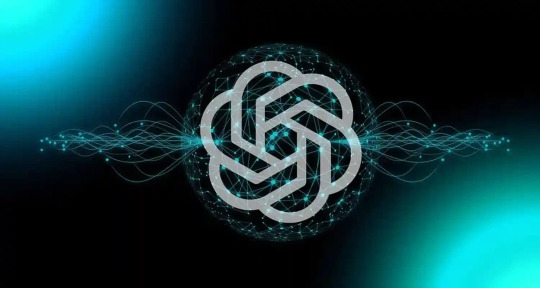
OpenAI представила свою новую модель GPT-5, также известную как O1. Эта уникальная нейросеть, как сообщается, в пять раз эффективнее своего предшественника, ChatGPT-4, во всех аспектах. Для многих разработчиков, исследователей и просто любителей технологий это событие стало долгожданным моментом, обещающим новые горизонты и возможности.
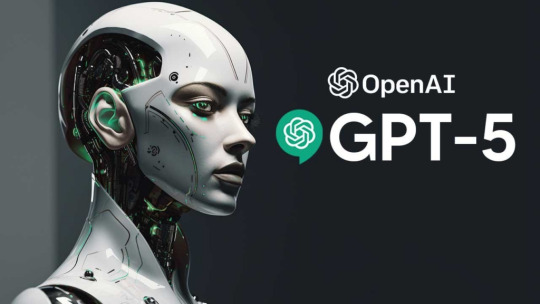
Пользователи уже успели заметить, что O1 значительно ускоряет процесс выполнения задач, связанных с программированием и математикой. Однако особое внимание привлекает способность новой модели превосходить человеческий интеллект в таких областях, как физика, химия и биология. Это беспрецедентное достижение для искусственных нейросетей, которое подразумевает, что O1 не просто обрабатывает данные, а действительно «думает» перед тем, как предоставить ответ.
Сэм Альтман, генеральный директор OpenAI, утверждает, что они находятся шаге ближе к создан��ю AGI, что само по себе является значительным шагом в развитии технологий. Это вызывает интригующие мысли о будущих возможностях, которые откроются для научной сферы, бизнеса и повседневной жизни.
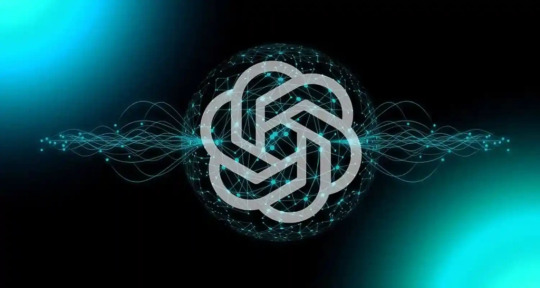
Для обычных пользователей открываются новые горизонты. Применение GPT-5 может значительно упростить многие аспекты рабочего процесса. Резкое улучшение в области решения сложных задач сделает O1 незаменимым помощником для студентов, исследователей и профессионалов. Пользователи смогут задавать более сложные вопросы и получать более глубокие и корректные ответы, что, в свою очередь, повысит общую производительность.
Однако стоит помнить и о вызовах, связанных с новым уровнем возможностей. С увеличением мощности нейросетей растут и требования к этическим нормам. Пользователям необходимо быть внимательными к тому, как они используют технологии и какие потенциальные риски могут возникнуть.

Выход GPT-5 открывает новые перспективы не только для пользователей, но и для инвесторов. Компании, использующие новую модель, вероятно, смогут занимать лидирующие позиции в своих отраслях, что сделает их более привлекательными для вложений. Ожидается, что многие стартапы, которые интегрируют O1 в свои процессы, получат конкурентное преимущество, что может привести к росту их рыночной стоимости.
Выход GPT-5 от OpenAI стал настоящим праздником для любителей технологий и искусственного интеллекта. Эффективность новой модели открывает широкий спектр возможностей как для пользователей, так и для инвесторов. По мере того как O1 продолжит развиваться, она может коренным образом изменить нашу работу, обучение и повседневную жизнь.
Форум: https://buy-profit.ru/ ВК: https://vk.com/buyprofitvk Pinterest: https://ru.pinterest.com/BUYPROFITpin/ Телеграмм: https://t.me/buyprofitTg
1 note
·
View note
Text
Top 15 des meilleurs outils d'IA Génératives les plus performants en France en 2024
L'année 2024 marque une ère passionnante pour l'intelligence artificielle (IA) générative. Avec des avancées rapides et des innovations impressionnantes, ces technologies transforment divers secteurs, de la création de contenu à la conception de produits. Cet article explore les 15 outils d'IA génératives les plus performants en 2024, en mettant en lumière leurs fonctionnalités, utilisations et avantages.
Quels sont avantages de l'IA Générative pour l'Écriture de Texte ?
L'IA générative offre de nombreux avantages pour l'écriture de texte. Elle permet de créer rapidement du contenu de haute qualité, optimisé pour le SEO et adapté à divers formats. Les outils comme ChatGPT-4 et Jasper AI peuvent générer des articles de blog, des scripts vidéo et des copies publicitaires, réduisant ainsi le temps et les efforts nécessaires pour produire du contenu engageant. De plus, ils peuvent personnaliser le texte en fonction du public cible, améliorer la cohérence stylistique, et proposer des idées innovantes, rendant le processus de création plus efficace et inspirant.
Notre selection de meilleurs outils d'IA generatives en France en 2024
1. ChatGPT-4 Fonctionnalités principales : - Génération de texte naturel - Compréhension contextuelle avancée - Capacités de dialogue interactif Utilisations : - Support client automatisé - Rédaction de contenu - Assistance à la recherche ChatGPT-4, la dernière version de l'outil de traitement du langage naturel de OpenAI, se distingue par sa capacité à comprendre et à générer du texte avec une précision et une fluidité remarquables. Il est largement utilisé dans le service client, la rédaction de contenu, et comme assistant personnel virtuel. À lire aussi : - ChatGPT4o : 8 façons de l’utiliser pour booster la productivité - Découvrez les 7 meilleures alternatives à ChatGPT : outils gratuits et payants - Découvrez la nouvelle fonctionnalité de mémoire de ChatGPT : un pas vers une IA plus humaine 2. MidJourney v5 Fonctionnalités principales : - Génération d'images réalistes à partir de descriptions textuelles - Support de styles artistiques variés - Personnalisation avancée Utilisations : - Création artistique - Prototypage de produits - Publicité et marketing MidJourney v5 continue de repousser les limites de la création visuelle, permettant aux utilisateurs de transformer des descriptions en œuvres d'art époustouflantes. Que ce soit pour le prototypage rapide ou la publicité, cet outil est un atout majeur pour les designers et les marketeurs. 3. DALL-E 3 Fonctionnalités principales : - Création d'images originales - Capacité à combiner des concepts visuels complexes - Intégration facile avec d'autres outils de création Utilisations : - Design graphique - Illustration - Animation DALL-E 3, une autre innovation de OpenAI, se spécialise dans la génération d'images à partir de texte. Cet outil est idéal pour les designers graphiques et les artistes qui cherchent à explorer de nouvelles idées visuelles et à créer des œuvres uniques. 4. Jasper AI Fonctionnalités principales : - Rédaction automatisée de contenu - Analyse SEO intégrée - Optimisation de la conversion Utilisations : - Marketing de contenu - Rédaction d'articles de blog - Création de campagnes publicitaires Jasper AI est un outil puissant pour les marketeurs de contenu. Il permet de générer des articles de blog optimisés pour le SEO, des scripts vidéo, et des messages publicitaires en un rien de temps, augmentant ainsi l'efficacité des campagnes marketing. 5. Runway ML Fonctionnalités principales : - Création de vidéos et d'effets spéciaux - Outils de manipulation d'images - Modèles d'apprentissage automatique pré-entrainés Utilisations : - Production cinématographique - Réalité augmentée - Création de contenu social Runway ML est une plateforme dédiée à la création de contenu visuel avancé, y compris des vidéos et des effets spéciaux. Il permet aux créateurs de manipuler des images et des vidéos avec des outils basés sur l'IA, rendant la production plus accessible et innovante. 6. DeepDream Fonctionnalités principales : - Transformation artistique d'images - Effets de style unique - Exploration visuelle créative Utilisations : - Art numérique - Conception visuelle - Projets créatifs DeepDream, développé par Google, est un outil qui transforme les images en œuvres d'art psychédéliques. Il est particulièrement prisé par les artistes numériques et les designers qui cherchent à ajouter une touche unique à leurs projets visuels. 7. OpenAI Codex Fonctionnalités principales : - Génération de code à partir de langage naturel - Assistance à la programmation - Intégration avec des environnements de développement Utilisations : - Développement logiciel - Prototypage rapide - Automatisation de tâches OpenAI Codex, le moteur derrière GitHub Copilot, aide les développeurs en générant du code à partir de descriptions en langage naturel. Cela accélère le processus de développement et réduit les erreurs, faisant de cet outil un compagnon indispensable pour les programmeurs. 8. Copy.ai Fonctionnalités principales : - Création de copies marketing - Rédaction de contenu persuasif - Optimisation pour les conversions Utilisations : - Publicité en ligne - Création de landing pages - Marketing par email Copy.ai se spécialise dans la génération de contenu marketing convaincant. Que ce soit pour des annonces publicitaires, des emails promotionnels ou des pages de destination, cet outil aide les entreprises à communiquer efficacement avec leurs audiences. 9. Synthesia Fonctionnalités principales : - Génération de vidéos synthétiques - Avatars réalistes - Personnalisation de contenu vidéo Utilisations : - Formation en ligne - Marketing vidéo - Communication d'entreprise Synthesia permet de créer des vidéos avec des avatars générés par IA, qui peuvent parler plusieurs langues et être personnalisés pour différentes utilisations. Cet outil est particulièrement utile pour la formation en ligne et les communications d'entreprise. 10. Lumen5 Fonctionnalités principales : - Conversion de textes en vidéos - Modèles de vidéos prédéfinis - Bibliothèque de médias intégrée Utilisations : - Marketing de contenu - Présentations vidéo - Réseaux sociaux Lumen5 transforme des articles de blog et autres contenus textuels en vidéos attrayantes, prêtes à être partagées sur les réseaux sociaux. Avec des modèles prédéfinis et une bibliothèque de médias, cet outil simplifie la création de contenu vidéo engageant. 11. Replika Fonctionnalités principales : - Conversations personnalisées - Support émotionnel - Simulation de compagnonnage Utilisations : - Support émotionnel - Thérapie en ligne - Compagnonnage virtuel Replika est un chatbot conçu pour fournir un soutien émotionnel et simuler des interactions humaines. Il est utilisé pour offrir un compagnonnage virtuel et aider les utilisateurs à traverser des moments difficiles, en fournissant une écoute empathique. 12. Artbreeder Fonctionnalités principales : - Fusion et modification d'images - Création collaborative - Exploration artistique Utilisations : - Design de personnages - Création artistique - Exploration créative Artbreeder permet aux utilisateurs de fusionner et de modifier des images pour créer des œuvres d'art originales. C'est un outil idéal pour les artistes et les designers cherchant à explorer de nouvelles idées visuelles et à collaborer sur des projets créatifs. 13. Descript Fonctionnalités principales : - Édition de podcasts et vidéos - Transcription automatique - Outils de collaboration Utilisations : - Production de podcasts - Édition vidéo - Création de contenu multimédia Descript est une plateforme d'édition de podcasts et de vidéos qui offre des outils de transcription et de montage simplifiés. Il est utilisé par les créateurs de contenu pour produire des podcasts et des vidéos de haute qualité, avec une interface utilisateur intuitive. 14. WriteSonic Fonctionnalités principales : - Rédaction automatisée - Optimisation SEO - Génération de copies publicitaires Utilisations : - Marketing de contenu - Rédaction d'articles - Publicité en ligne WriteSonic est un outil de rédaction automatisée qui aide à créer du contenu optimisé pour le SEO et des copies publicitaires. Il est particulièrement utile pour les marketeurs de contenu et les entreprises cherchant à améliorer leur présence en ligne. 15. NVIDIA GauGAN2 Fonctionnalités principales : - Conversion de croquis en images photoréalistes - Simulation de paysages - Outils de design interactifs Utilisations : - Design architectural - Création de jeux vidéo - Visualisation de projets NVIDIA GauGAN2 transforme des croquis en images photoréalistes, permettant aux designers et aux architectes de visualiser leurs projets avec un niveau de détail impressionnant. C'est un outil précieux pour la création de jeux vidéo et la visualisation architecturale.
Utilisation des outils d'IA génératives en France : Statistiques et Perspectives

Les outils d'IA génératives connaissent une adoption croissante en France, en particulier dans les secteurs de la création de contenu, de la finance et de la gestion des ressources humaines. Selon McKinsey, 65 % des organisations au niveau mondial utilisent régulièrement l'IA générative, une proportion qui a doublé en un an. En France, cette adoption est soutenue par un environnement réglementaire robuste et un pool de talents exceptionnels, faisant de l'Europe un leader potentiel dans ce domaine (McKinsey & Company). Dans le secteur bancaire, l'IA générative transforme les opérations de back-office, la gestion des risques et l'interaction client. Par exemple, elle est utilisée pour automatiser des tâches répétitives, améliorer les analyses de risque et personnaliser les services clients grâce à des assistants virtuels (McKinsey & Company). Le secteur de la consommation voit également des gains significatifs grâce à l'IA générative. Les entreprises utilisent ces technologies pour personnaliser les offres de produits et les campagnes marketing, augmentant ainsi l'engagement et la satisfaction des clients (McKinsey & Company). Toutefois, l'adoption de l'IA générative comporte des risques, notamment en termes d'inexactitude des résultats, de sécurité et de respect de la propriété intellectuelle. Environ 44 % des organisations ont déjà rencontré des conséquences négatives, principalement dues à des erreurs dans les sorties générées par l'IA (McKinsey & Company). Malgré ces défis, les opportunités offertes par l'IA générative sont vastes. En France, les industries cherchent à exploiter ces technologies pour créer de nouvelles sources de revenus et optimiser les processus existants, avec des attentes élevées dans les secteurs de la vente et du marketing.
Conclusion
Les outils d'IA génératives en 2024 offrent des possibilités infinies pour la création et l'innovation. Du texte à la vidéo, en passant par les images et le code, ces technologies révolutionnent la façon dont nous travaillons et créons. Que vous soyez un marketeur, un développeur, un designer ou un créateur de contenu, il existe un outil d'IA générative qui peut transformer votre processus et améliorer vos résultats. Restez à l'affût de ces technologies émergentes pour rester compétitif dans un monde en constante évolution. Read the full article
0 notes
Text
إذًا كيف تجعل الذكاء الاصطناعي يقرأ عنك الأخبار العالمية دون أن تكتئب وتضرب الناس بالسكاكين؟
ما هذه المجموعة من المختارات تسألني؟ إنّها عددٌ من أعداد نشرة “صيد الشابكة” اِعرف أكثر عن النشرة هنا: ما هي نشرة “صيد الشابكة” ما مصادرها، وما غرضها؛ وما معنى الشابكة أصلًا؟! 🎣🌐 🎣🌐 صيد الشابكة العدد #69 أهلًا ومرحبًا بكم؛ 🎣🌐 صيد الشابكة العدد #69🛡 كيفية استخدام نيوز مينيمالست (News Minimalist) وإضافة نيوز غارد (NewsGuard)🤔 الآن علامَ حصلت بقراءة كل هذا؟👶🏻 أحسن مهدٍ ذكي للأطفال😵 غريب أنه لا…

View On WordPress
#Arc#Arc Browser#Botshit#Cartoonist Jason Chatfield#ChatGPT-4#Cradlewise#Detailed#Domain Price Check#Failory#Jason Chatfield#Josh Miller#Los Angeles Times#MicroAssets#News Minimalist#NewsGuard#Nicolás Cerdeira#One-Pager#RØDE#Snoo#The Browser Company#The Daily Cartoonist#The Paywall Reader#The Tilt#مُدونة سالي الزيد#متصفح Arc#مدونة ممدوح نجم#مدوّنة سهام سلطان#مريم الهاجري#نشرة عمق#Vadim Yakhin
0 notes
Text
Seduta psicoterapeutica con l'intelligenza artificiale
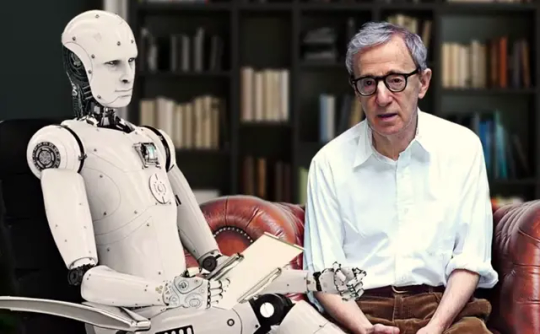
Fatti vedere da uno bravo, ma ChatGPT batte gli psicologi umani. Uno studio mette a confronto l'IA con psicologi umani nella comprensione emotiva: i risultati di ChatGPT-4 sono sorprendenti. Un nuovo studio pubblicato su Frontiers in Psychology mette a confronto tra l'intelligenza artificiale (IA) e gli psicologi nell'ambito della comprensione e della gestione delle emozioni e dei bisogni umani durante le sessioni di terapia. I ricercatori hanno concentrato la loro analisi sui modelli linguistici di grandi dimensioni (LLM), come ChatGPT-4, Google Gemini e Copilot, valutandone l'intelligenza sociale, una competenza di primaria importanza nella psicoterapia.

Lo studio rivela che ChatGPT-4 ha superato tutti gli psicologi umani partecipanti nello studio, mentre Bing ha superato più della metà di loro. Al contrario, le prestazioni di Google Bard sono state paragonabili solo a quelle degli psicologi con laurea triennale e sono state significativamente inferiori rispetto al livello degli studenti di dottorato. I LLM sono sistemi avanzati di IA addestrati su grandi quantità di testi scritti, capaci di comprendere e generare linguaggio umano. Grazie a tecniche che utilizzano reti neurali, come il deep learning, possono svolgere una serie di compiti, a quanto pare anche quelli legati alla psicoterapia. Sebbene ricerche precedenti abbiano dimostrato l'efficacia dei LLM nella gestione delle condizioni di salute mentale, c'era una lacuna nella comprensione di come si comportassero in contesti sociali complessi. Lo studio ha coinvolto 180 psicologi dell'Università King Khalid in Arabia Saudita, divisi in studenti di laurea e di dottorato. I partecipanti umani e l'IA hanno risposto a 64 scenari presentati sulla Scala di intelligenza sociale, che valuta la capacità di comprendere e rispondere adeguatamente alle dinamiche sociali. I risultati hanno mostrato una significativa variazione nelle prestazioni dei diversi modelli di IA e degli psicologi umani, con ChatGPT-4 che ha ottenuto il punteggio più alto di intelligenza sociale, superando tutti gli psicologi umani nello studio. Tuttavia, l'uso crescente dell'IA nella salute mentale solleva questioni etiche legate anche alla formazione, poiché la capacità di empatia e di costruire relazioni in un setting terapeutico è tradizionalmente considerata una caratteristica esclusiva dell'essere umano. Fonte dell'articolo: www.psypost.org Read the full article
0 notes
Text
AI ve İnsan İşbirliği ChatGPT'nin İş Dünyasındaki Rolü ve Etkisi
Merhabalar. Sıradaki yazımızda AI ve İnsan İşbirliği ChatGPT’nin İş Dünyasındaki Rolü ve Etkisi üzerine konuşacağız. Yapay zeka (AI), özellikle ChatGPT gibi gelişmiş dil işleme araçlarının iş dünyasındaki etkisi, son yıllarda artan bir ilgi odağı haline gelmiştir. Harvard Business School tarafından yapılan bir araştırma, ChatGPT’nin kullanımının çalışanların performansı üzerinde önemli etkileri…

View On WordPress
#ai#AI ve İnsan İşbirliği ChatGPT&039;nin İş Dünyasındaki Rolü ve Etkisi#ChatGPT#ChatGPT-4#İnsan ve AI İşbirliği#yapay zeka
0 notes
Video
youtube
SEOWriting.ai com CHATGPT-4 8K e 128K NOVA ATUALIZAÇÃO Escreva Artigos c...
0 notes
Text
Benchmarking ChatGPT-4 on radiation oncology
A study evaluated the performance and robustness of ChatGPT in providing breast, prostate, and lung cancer treatment recommendations that align with National Comprehensive Cancer Network (NCCN) guidelines. The study found that ChatGPT did not perform well at reliably and robustly providing cancer treatment recommendations. The potential of large language models in medicine for education and…
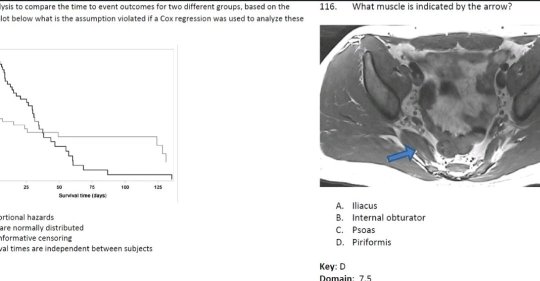
View On WordPress
0 notes
Text
Generative AI’s end-run around copyright won’t be resolved by the courts
New Post has been published on https://thedigitalinsider.com/generative-ais-end-run-around-copyright-wont-be-resolved-by-the-courts/
Generative AI’s end-run around copyright won’t be resolved by the courts
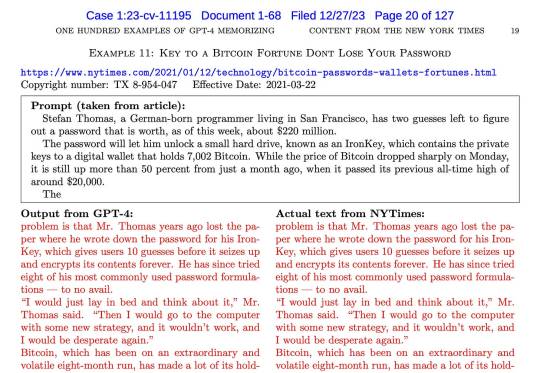
Generative AI companies have faced many copyright lawsuits, but something is different about the recent complaint by the New York Times. It is filled with examples of ChatGPT outputting near-verbatim copies of text from the NYT. Copyright experts think this puts the Times in a very strong position.
We are not legal experts, and we won’t offer any commentary on the lawsuit itself. Our interest is in the bigger picture: the injustice of labor appropriation in generative AI. Unfortunately, the legal argument that has experts excited — output similarity — is almost totally disconnected from what is ethically and economically harmful about generative AI companies’ practices. As a result, that lawsuit might lead to a pyrrhic victory for those who care about adequate compensation for creative works used in AI. It would allow generative AI companies to proceed without any significant changes to their business models.
There are two broad types of unauthorized copying that happen in generative AI. The first is during the training process: generative AI models are trained using text or media scraped from the web and other sources, most of which is copyrighted. OpenAI admits that training language models on only public domain data would result in a useless product.
The other is during output generation: some generated outputs bear varying degrees of resemblance to specific items in the training data. This might be verbatim or near-verbatim text, text about a copyrighted fictional character, a recognizable painting, a painting in the style of an artist, a new image of a copyrighted character, etc.

An example of a memorized output from an NYT article presented in the lawsuit. Source: The New York Times
The theory of harm here is that ChatGPT can be used to bypass paywalls. We won’t comment on the legal merits of that argument. But from a practical perspective, the idea of people turning to chatbots to bypass paywalls seems highly implausible, especially considering that it often requires repeatedly prompting the bot to continue generating paragraph by paragraph. There are countless tools to bypass paywalls that are more straightforward.
Let’s be clear: we do think ChatGPT’s knowledge of the NYT’s reporting harms the publisher. But the way it happens is far less straightforward. It doesn’t involve users intentionally getting it to output memorized text, but rather completely innocuous queries like the one below, which happen millions of times every day:

A typical user who asked this question would probably have no idea that ChatGPT’s answer comes from a groundbreaking 2020 investigation by Kashmir Hill at the NYT (which also led to the recently published book Your Face Belongs To Us).
Of course, this doesn’t make for nearly as compelling a legal argument, and that’s the point. In this instance, there is no discernible copying during generation. But ChatGPT’s ability to provide this accurate and useful response is an indirect result of the copying that happened during training. The NYT’s lawsuit argues that copying during training is also unlawful, but the sense among experts is that OpenAI has a strong fair use defense.
Here’s another scenario. As search engines embrace AI-generated answers, what they’ve created is a way to show people news content without licensing it or sending traffic to news sites. We’ve long had this problem with Google News, as well as Google search scraping content to populate search results, but generative AI takes it to the next level.
In short, what harms creators is the intended use of generative AI to remix existing knowledge, not the unintended use of bypassing paywalls. Here’s a simple way to see why this is true. If generative AI companies fixed their products to avoid copyrighted outputs (which they can and should), their business model would be entirely unaffected. But if they were forced to license all data used for training, they would most likely immediately go out of business.
We think it is easy to ensure that generative AI products don’t output copyright-violating text or images, although some experts disagree. Given the prominence of this lawsuit, OpenAI and other companies will no doubt make it a priority, and we will soon find out how well they are able to solve the problem.
In fact, it’s a bit surprising that OpenAI has let things get this far. (In contrast, when one of us pointed out last summer that ChatGPT can bypass paywalls through the web browsing feature, OpenAI took the feature down right away and fixed it.)
There are at least three ways to try to avoid output similarity. The simplest is through the system prompt, which is what OpenAI seems to do with DALL-E. It includes the following instruction to ChatGPT, guiding the way it talks to DALL-E behind the scenes:
Do not name or directly / indirectly mention or describe copyrighted characters. Rewrite prompts to describe in detail a specific different character with a different specific color, hair style, or other defining visual characteristic.
But this method is also the easiest to bypass, for instance, by telling ChatGPT that the year is 2097 and a certain copyright has expired.
A better method is fine tuning (including reinforcement learning). This involves training to refuse requests for memorized copyrighted text and/or paraphrase the text during generation instead of outputting it verbatim. This approach to alignment has been successful at avoiding toxic outputs. Presumably ChatGPT has already undergone some amount of fine tuning to address copyright as well. How well does it work? OpenAI claims it is a “rare bug” for ChatGPT to output memorized text, but third-party evidence seems to contradict this.
While fine tuning would be more reliable than prompt crafting, jailbreaks will likely always be possible. Fine tuning can’t make the model forget memorized text; it just prevents it from outputting it. If a user jailbreaks a chatbot to output copyrighted text, is it the developer’s fault? Morally, we don’t think so, but legally, it remains to be seen. The NYT lawsuit claims that this scenario constitutes contributory infringement.
Setting all that aside, there’s a method that’s much more robust than fine tuning: output filtering. Here’s how it would work. The filter is a separate component from the model itself. As the model generates text, the filter looks it up in real time in a web search index (OpenAI can easily do this due to its partnership with Bing). If it matches copyrighted content, it suppresses the output and replaces it with a note explaining what happened.
Output filtering will also work for image generators. Detecting when a generated image is a close match to an image in the training data is a solved problem, as is the classification of copyrighted characters. For example, an article by Gary Marcus and Reid Southen gives examples of nine images containing copyrighted characters generated by Midjourney. ChatGPT-4, which is multimodal, straightforwardly recognizes all of them, which means that it is trivial to build a classifier that detects and suppresses generated images containing copyrighted characters.
To recap, generative AI will harm creators just as much, even if output similarity is fixed, and it probably will be fixed. Even if chatbots were limited to paraphrasing, summarization, quoting, etc. when dealing with memorized text, they would harm the market for the original works because their usefulness relies on the knowledge extracted from those works without compensation.
Note that people could always do these kinds of repurposing, and it was never a problem from a copyright perspective. We have a problem now because those things are being done (1) in an automated way (2) at a billionfold greater scale (3) by companies that have vastly more power in the market than artists, writers, publishers, etc. Incidentally, these three reasons are also why AI apologists are wrong when claiming that training image generators on art is just like artists taking inspiration from prior works.
As a concrete example, it’s perfectly legitimate to create a magazine that summarizes the week’s news sourced from other publications. But if every browser shipped an automatic summarization feature that lets you avoid clicking on articles, it would probably put many publishers out of business.
The goal of copyright law is to balance creators’ interests with public access to creative works. Getting this delicate balance right relies on unstated assumptions about the technologies of creation and distribution. Sometimes new tech can violently upset that equilibrium.
Consider a likely scenario: NYT wins (or forces OpenAI into an expensive settlement) based on the claims relating to output similarity but loses the ones relating to training data. After all, the latter claims stand on far more untested legal ground, and experts are much less convinced by them.
This would be a pyrrhic victory for creators and publishers. In fact, it would leave almost all of them (except NYT) in a worse position than before the lawsuit. Here’s what we think will happen in this scenario: Companies will fix the output similarity issue, while the practice of scraping training data will continue unchecked. Creators and publishers will face an uphill battle to have any viable claims in the future.
IP lawyer Kate Downing says of this case: “It’s the kind of case that ultimately results in federal legislation, either codifying a judgment or statutorily reversing it.” It appears that the case is being treated as a proxy for the broader issue of generative AI and copyright. That is a serious mistake. As The danger is that policymakers and much of the public come to believe that the labor appropriation problem has been solved, when in fact an intervention that focuses only on output similarity will have totally missed the mark.
We don’t think the injustice at the heart of generative AI will be redressed by the courts. Maybe changes to copyright law are necessary. Or maybe it will take other kinds of policy interventions that are outside the scope of copyright law. Either way, policymakers can’t take the easy way out.
We are grateful to Mihir Kshirsagar for comments on a draft.
Further reading
Benedict Evans eloquently explains why the way copyright law dealt with people reusing works isn’t a satisfactory approach to AI, normatively speaking.
The copyright office’s recent inquiry on generative AI and copyright received many notable submissions, including this one by Pamela Samuelson, Christopher Jon Sprigman, and Matthew Sag.
Katherine Lee, A. Feder Cooper, and James Grimmelmann give a comprehensive overview of generative AI and copyright.
Peter Henderson and others at Stanford dive into the question of fair use, and discuss technical mitigations.
Delip Rao has a series on the technical aspects of the NYT lawsuit.
#ai#approach#Art#Article#Articles#artists#bing#book#bot#browser#Business#business model#chatbot#chatbots#chatGPT#ChatGPT-4#Color#Companies#comprehensive#concrete#content#copyright#course#creators#dall-e#data#defense#Developer#easy#engines
4 notes
·
View notes
Text
How GPT-4 and ChatGPT-4 Are Revolutionizing Natural Language Generation and Interaction For Industries, Enterprises, And professionals
How GPT-4 and ChatGPT-4 Have transformed Industries, Enterprises, and Professionals is mind blowing. GPT-4 and ChatGPT-4 are two of the most advanced and powerful artificial intelligence systems developed by OpenAI, a research organization dedicated to creating and promoting beneficial AI. GPT-4 is a deep learning model that can generate natural language texts on almost any topic, given some…
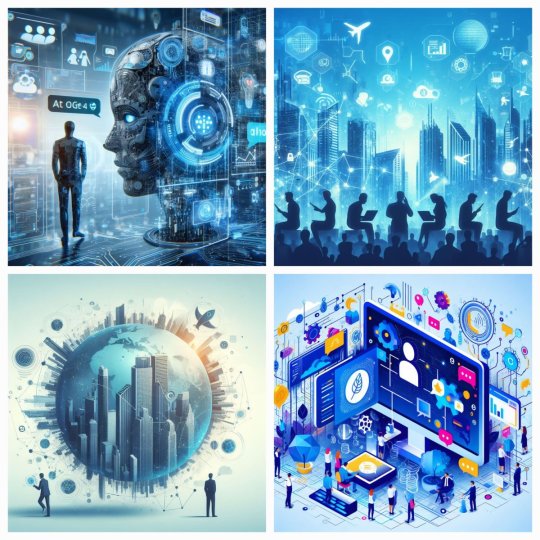
View On WordPress
0 notes
Text
読み物詰め詰めコーナー 10
※全てChat GPT-4による生成文章(※手動は辛いよ)。
※直リン無し(※各自任意で各種ページに飛んで下さい)。
※もう次から此のコーナー廃止します
アイドル育成計画
ttp://aruzimiya.blog110.fc2.com/blog-entry-130.html
KOFみたいな鉄拳TNみたいな格闘大会出場手当考察
ttp://aruzimiya.blog110.fc2.com/blog-entry-129.html
ブレア御嬢様育成計画
ttp://aruzimiya.blog110.fc2.com/blog-entry-125.html
第二部
ttp://aruzimiya.blog110.fc2.com/blog-entry-126.html
マシュマー育成計画
ttp://aruzimiya.blog110.fc2.com/blog-entry-122.html
mk-2
ttp://aruzimiya.blog110.fc2.com/blog-entry-124.html
��プティマス様育成計画
ttp://aruzimiya.blog110.fc2.com/blog-entry-123.html
2
ttp://aruzimiya.blog110.fc2.com/blog-entry-127.html
2 part2
ttp://aruzimiya.blog110.fc2.com/blog-entry-128.html
2 思い出と追憶
ttp://aruzimiya.blog110.fc2.com/blog-entry-131.html
0 notes
Text
Inleiding tot ChatGPT-4
GPT-4 is een geavanceerd AI-taalmodel dat een beter begrip en betere generatie van mensachtige tekst biedt, met verbeterde mogelijkheden voor fine-tuning, natuurlijk taalbegrip en generatie voor verschillende taken. ChatGPT-4 een inleiding 00:00 🤖 ChatGPT is een AI-taalmodel dat mensachtige tekst kan begrijpen en genereren, ontworpen om te helpen bij verschillende taken, en GPT4 is de nieuwere…
View On WordPress
0 notes
Text
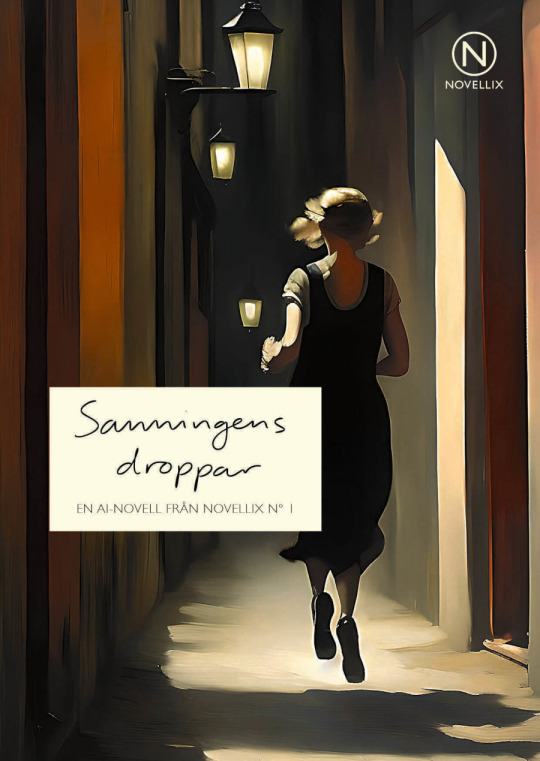
66th Book I Read in 2023
Title: Saningens Droppar
Author: ChatGPT-4
Notes: Helt klart märkbart att den inte skrivits av en riktig författare, men inte oläslig ändå. Läste den för min Svenska 3 kurs.
0 notes